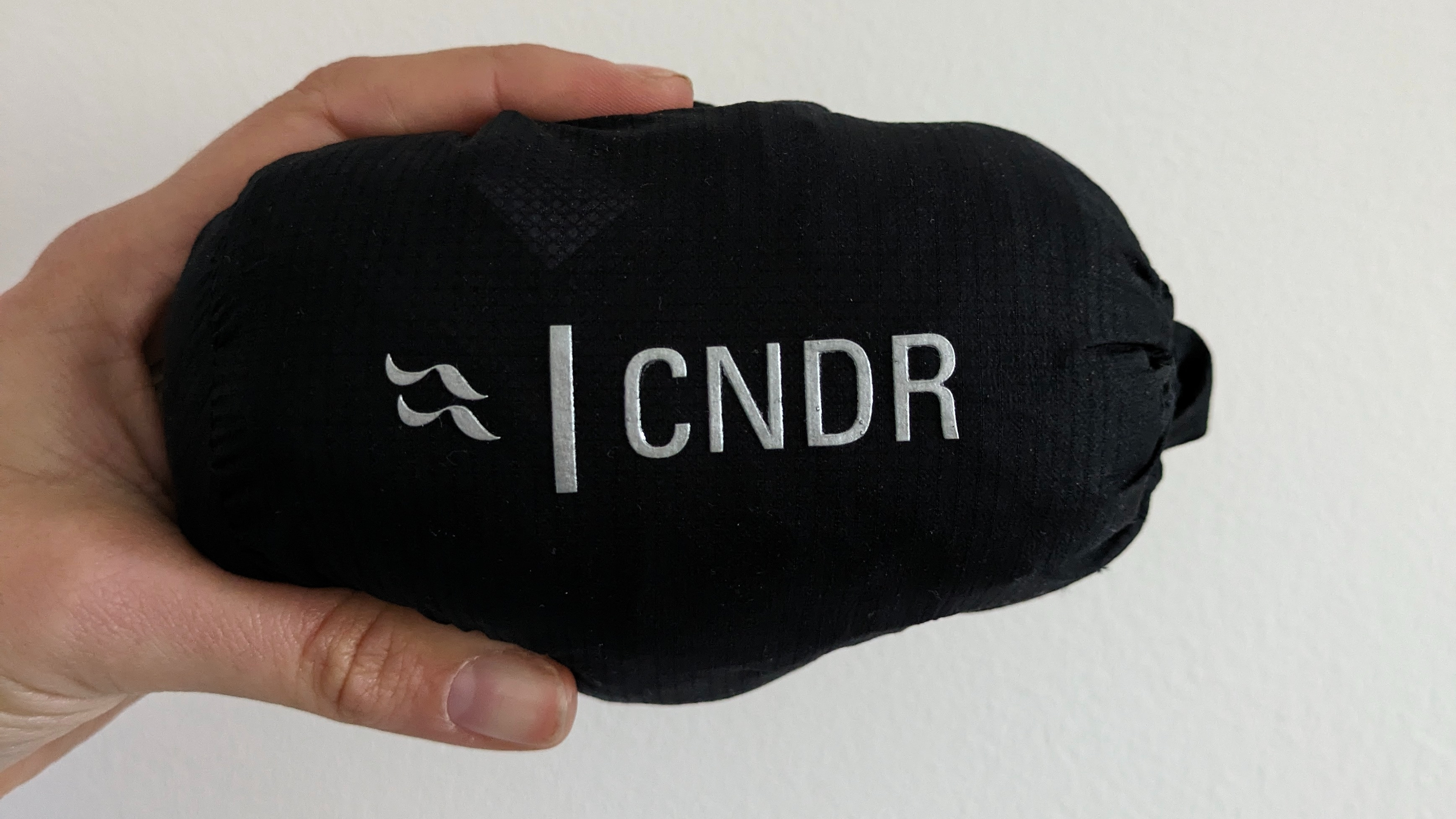Cyclingnews Verdict
Incredibly light, this jacket is the perfect ‘just in case’ without having to think about where to stow an extra layer.
Pros
- +
Incredibly light
- +
Very breathable
- +
Included stuff sack
Cons
- -
Flappy and noisy
- -
A lot to pay for an emergency layer
You can trust Cyclingnews
Upon opening the Rab Woman’s Cinder Phantom you could be forgiven for thinking that you’d accidentally been sent a light summer windproof rather than a waterproof jacket. It’s definitely the lightest of the jackets in our guide to the best waterproof cycling jackets. The name Phantom is very apt for such a light, squishable, teeny jacket. Looking at it you could believe it would be about as waterproof as a tea bag, but with an impressive set of stats it promises a lot in terms of waterproof and breathability.
I've put it through its paces over the winter as an emergency layer and in some sustained downpours to really test it out and see if I can find the limit of this featherweight option.

Design and aesthetics
Fit wise, this jacket has the vibe of a ‘just in case’ layer about it. It’s not going to turn heads and has quite a no nonsense boxy fit, not dissimilar to the dhb Aeron. The arms were a good length and the hood was a good fit. It’s worth noting this one is designed to go under your helmet, so if you want to keep your hair dry you’ll have to stop to pop it on.
The fabric is incredibly light and this Pertex Shield has the same rating as the Albion All Road Jacket I reviewed (20,000mm/MVTR: 20,000 g/m2/24hrs.) If that means absolutely nothing to you then check out this guide to waterproof ratings, but in lay terms it’s darn breathable and waterproof, on paper at any rate. It’s slightly stretchy for added comfort, too.
The Phantom comes with a separate, handy pouch so it can be strapped to your bike rather than having to find somewhere to keep it until you need it. It’s so small that putting it in a pocket is no problem, but if you don’t want to sweat soak it before you need it, the pouch is a nice touch. It has an elasticated cord attachment and has the Rab logo printed in silicone to offer a bit of grip to stop it moving and twisting on your frame.
With extreme weight shedding, also comes feature shredding! Don’t expect much by way of adjustment cords, velcro straps or pockets that would all add weight. Instead Rab has lightly elasticated cuffs that sit a bit wide at my wrists compared with other jackets, and the dropped hem is helped to stay in place with another silicone printed logo. The hood has a stiffened peak to help shield your eyes from rain, but your helmet is largely what will be holding it in place.
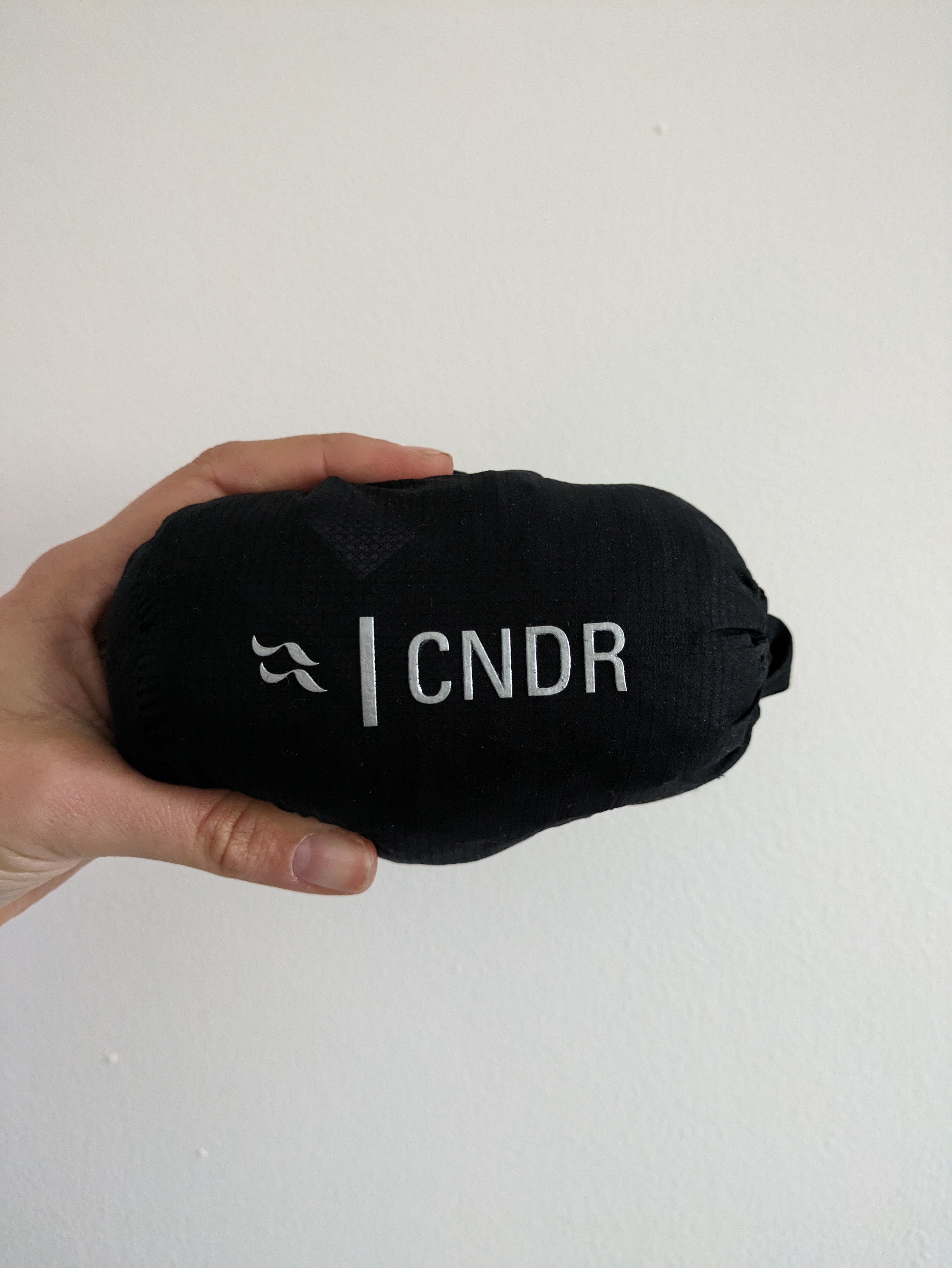
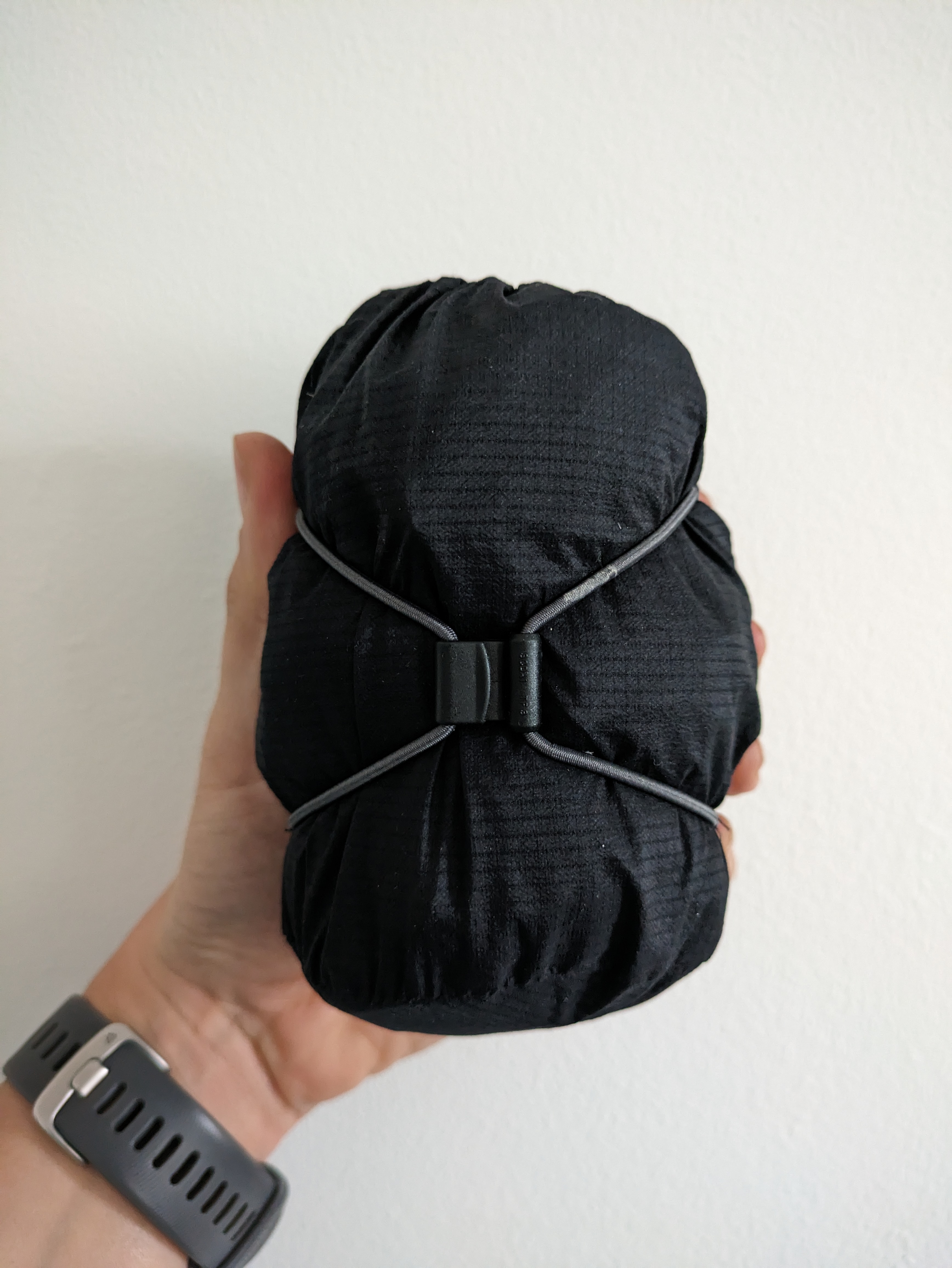
Performance
Waterproof testing really shifts your priorities, normally I’d be rushing out the door on a bright sunny day but instead I was willing rain clouds to come closer. Testing the Rab Cinder Phantom Jacket was one of those days. Rain clouds approached and I grabbed my bike and headed out the door with no plan other than to get rained on. The first thing I noticed when I pulled the Rab Cinder Phantom on was how noisy it was. It doesn’t take much wind to make it flap around and is definitely noticeable. The jacket is so light it almost feels cheap, and that’s only heightened by the flappy wind noise. The boxier fit with less adjustment options meant I just had to lump it as there's no way to improve matters.
I did find it a touch annoying to have to stop to use the hood as it is designed to go under the helmet. The stiffened peak sat well in place and did offer some additional protection from the falling rain, an essential if you are still to find the the best cycling glasses. The sleeves did let quite a lot of air flow up them which I didn’t mind, as the jacket is so breathable and not a windproof it was fine, but probably contributed to the noise issue.
Twenty minutes into my ride I decided to stop and take a look at how the jacket was performing. Breathability wise I wasn’t turning into a clammy mess! It’s fair to say the breathability of the jacket was a resounding success. As a waterproof layer it was holding up as well too. After a solid shower my jersey was dry but there was some spotting where the fabric of the jacket was starting to absorb some of the rain rather than repel it, but that is sadly a fact of life in the post-PFC DWR landscape. I carried on, it was worth pushing the jacket to see where its limits were.
My main bugbear with this jacket is that as the stuff sack isn’t integrated into the jacket, it’s pretty easy to misplace. I’ve lost mine twice to date and consider it to be a miracle I’ve found it both times. I can’t help but wonder why not have it integrated into a pocket? Then we’d all benefit from a pocket as well. When I do lose it, I’ll have lost one of the key features of this jacket and as they are few and far between I’ll notice that. I’d also love to see just a couple more reflective elements on the jacket. It feels especially lacking on the black option, probably less of an issue on the red, but when we switch the clocks back it feels like there is plenty of riding time where this would be appreciated.
After another 20 mins of riding time the rain had dialled back to just spitting. The spotting hadn’t come to much, I had some dampness at the crease of my elbow where the fabric was getting agitated and pressed the most while riding and on my shoulders which were getting the most rain. This was just the DWR failing though, rather than the membrane itself. It was time to shake it out and squish the jacket back into its stuff sack.
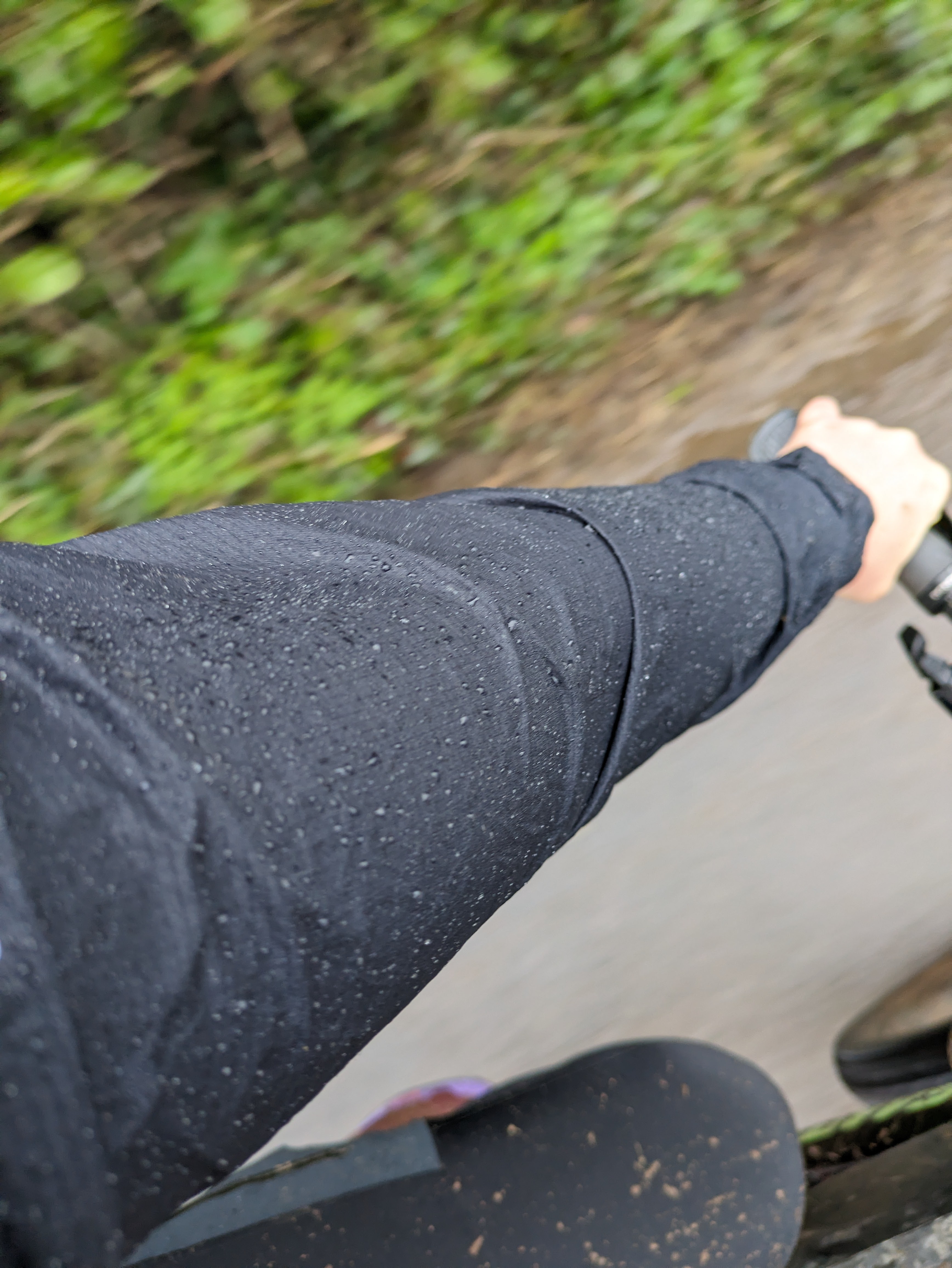
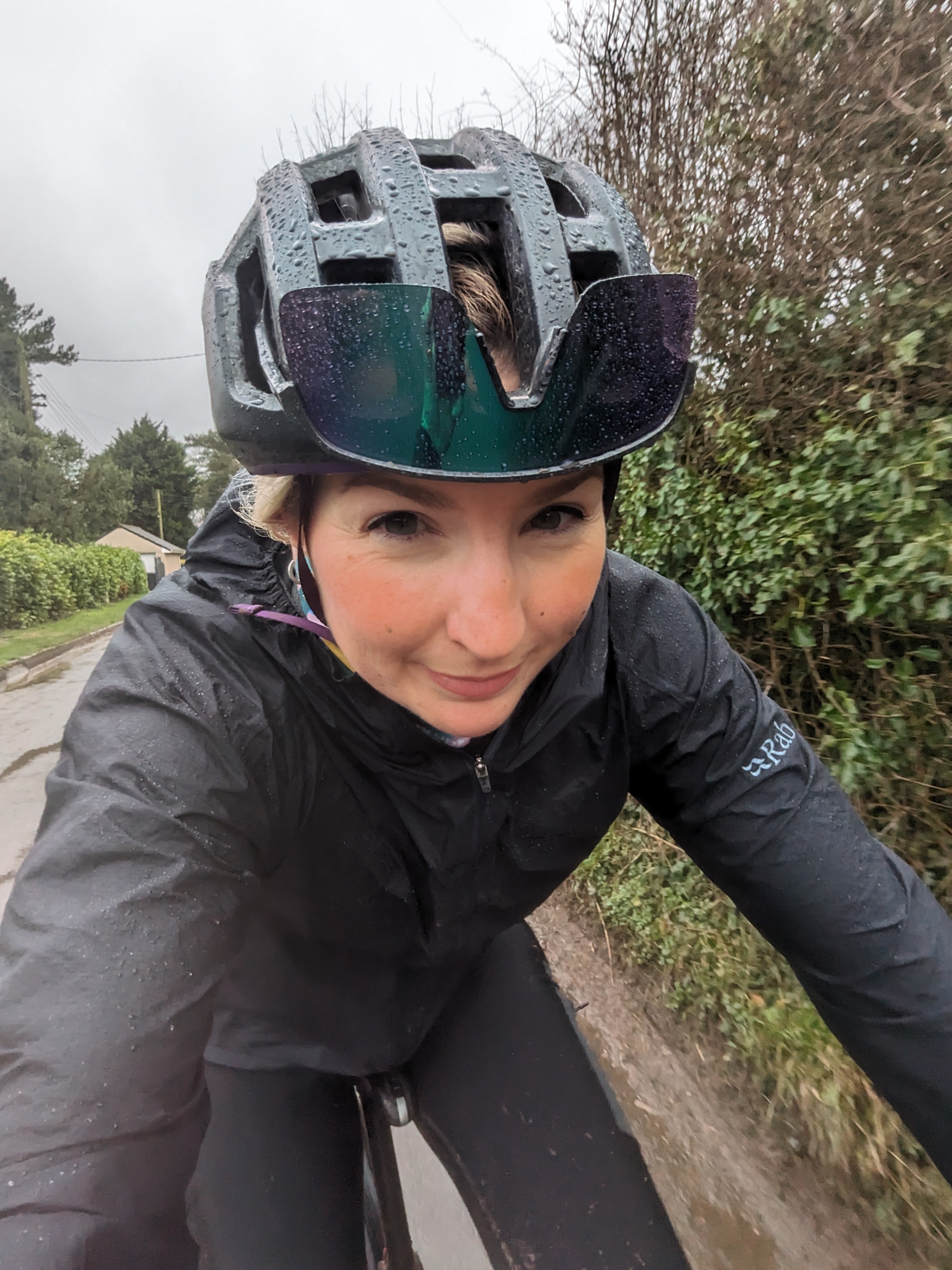
Value
It should come as no surprise to a cyclist that lightweight means a light wallet, and that’s the case here. At £195 it is by no means the most expensive jacket in our guide, but with so few features you could feel a bit nervy about handing over that much money. However, Rab describes it as “simply too light for you to leave behind,” and they are right, there’s no reason to leave something this light and small behind. If you prioritise shedding weight and want to only carry the lightest, most functional items when you head out on a ride, you’ll want to check the Phantom out.
On the flip side, if you are looking for a jacket that you can rely upon in all weathers for regular usage, I’d look elsewhere. The waterproof membrane is capable enough, as proven by countless other Pertex Shield jackets, but the gossamer nature of the face and liner mean the Phantom isn't a durable option.
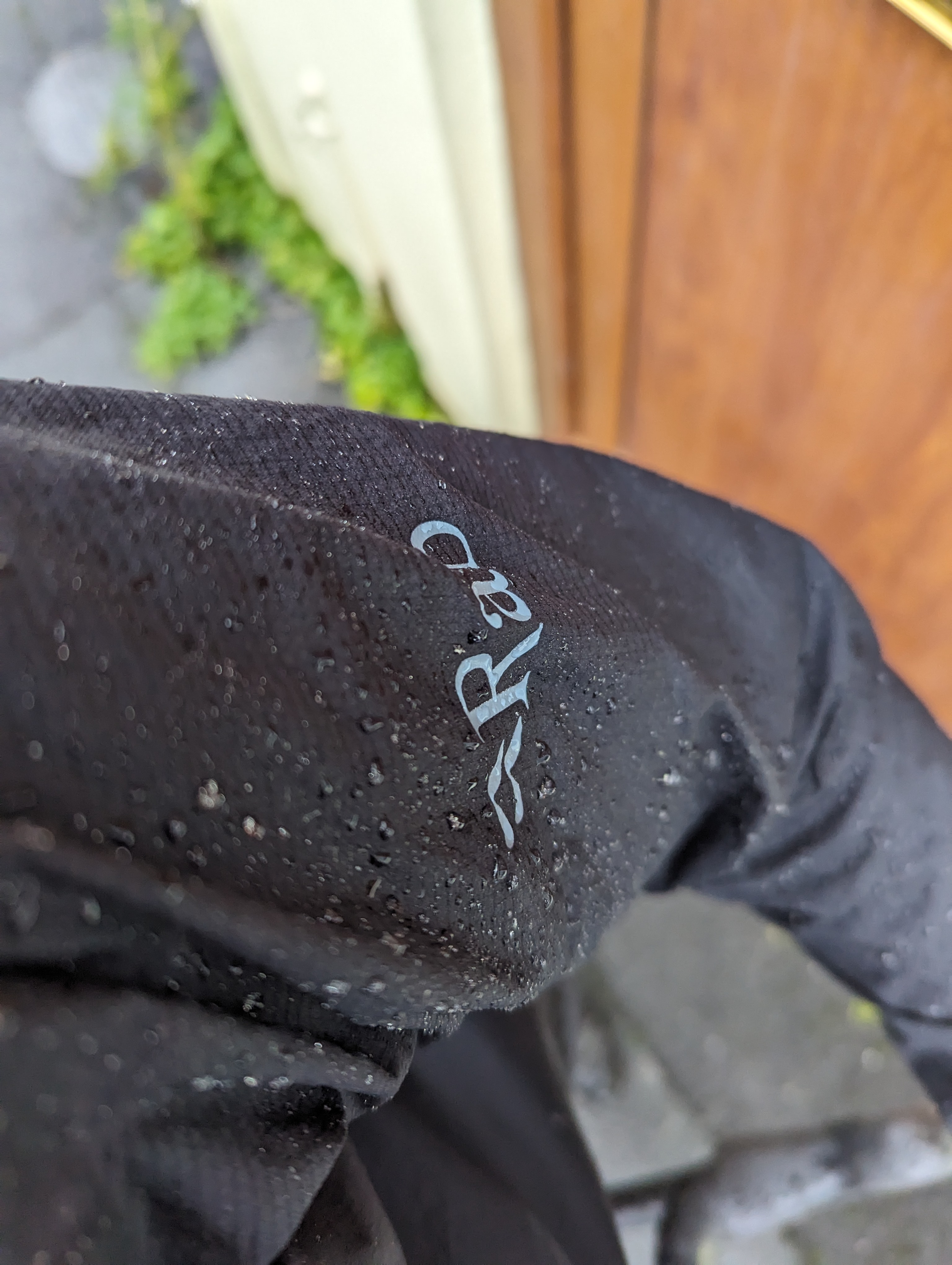
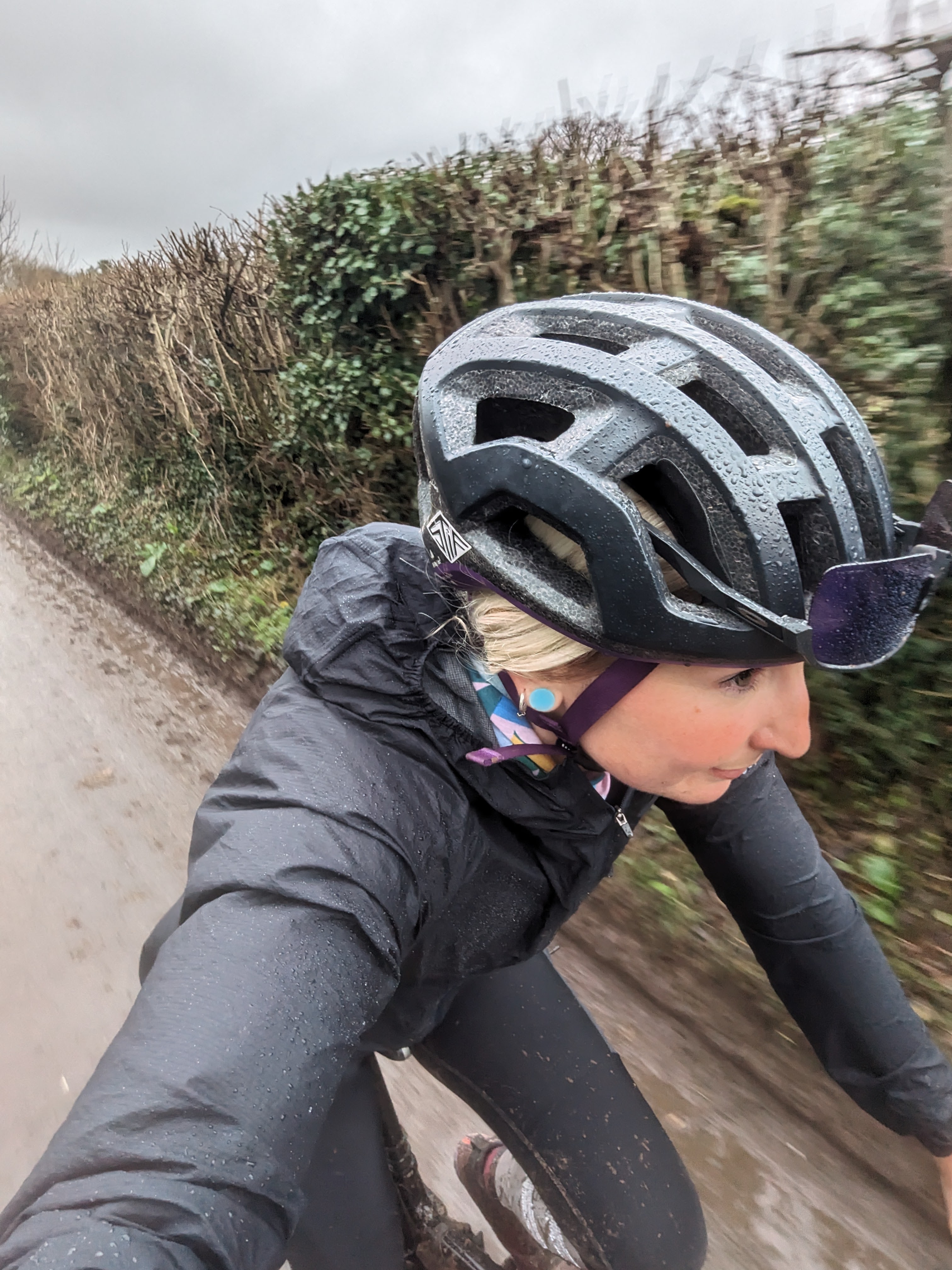
Verdict
All in all this is a good jacket, but it very much resides in the space of 'things you pack but hope to not use'. It'll keep the rain out, but if you're riding in the wet all day you'll probably want to take a more standard option. For bikepacking it could serve you well, but you'll have to prioritise low weight over durability.
| Attributes | Notes | Rating |
|---|---|---|
| Fit | Alright, nothing to write home about, though - Rather boxy and flappy | 6/10 |
| Protection | The DWR wetted out rather easily, though the membrane held firm. Lacking in durability. | 6/10 |
| Features | A stiffened peak, and a stuff sack but not much else to speak off - It's low weight and packability are the feature. | 7/10 |
| Breathability | Super breathable | 10/10 |
| Value | A bit on the pricey side considering. If you want a lightweight ‘just in case’ jacket then it aces that. | 6/10 |
| Overall rating | Row 5 - Cell 1 | 70% |

Claire is a level three MTB guide, founder of All Terre Adventures bike club, and a mainstay of the Bristol cycling scene. She rides road, gravel, MTB, and commutes by bike to work at Beryl, a cycle and electric scooter sharing scheme, so is well versed in all things cycling. Claire has contributed to our cycling kit buying guides, product reviews, and has written a number of our coupon code pages too.
All her bikes, and there are a fair few of them, are named after famous women. Britney Gears, Miley Vitus, Dusty Springfield etc.
